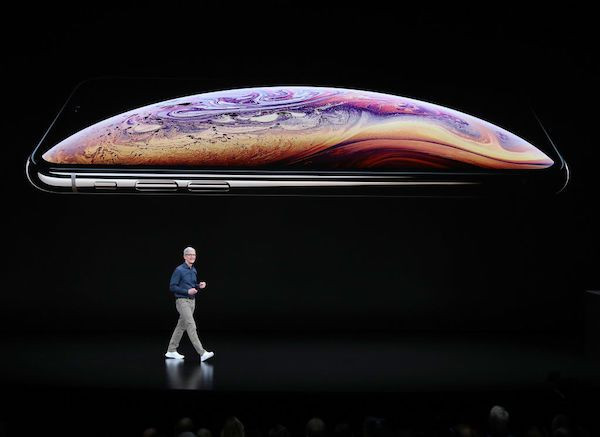iPhone XS vs. iPhone X: Is It Worth The Upgrade?

Your eyes didn’t fool you when Apple unveiled its newest flagship phone in September, the iPhone XS. The device is very similar to its predecessor, the iPhone X, in all physical aspects. The Cupertino giant basically came up with an “s” upgrade that sports better internals.
If you are thinking of purchasing an iPhone XS before bidding the year 2018 goodbye, then you better know what you really are getting. The iPhone XS is no different from the iPhone X in most areas. They even have the same starting price of $999, as pointed out by Business Insider. But then the newer handset is still worth the upgrade if you want to have access to the latest features and technologies.
Design-wise, you won’t find any difference if you are already using the tenth anniversary handset from Apple. The iPhone XS still packs the same 5.8-inch OLED screen with 1125 x 2436 screen resolution, 458 ppi pixel density and 19:5:9 aspect ratio thanks to the notch that houses the Face ID module and front speaker.
Having the same type of display, both the iPhone XS and iPhone X have wide color gamut, Dolby Vision, HDR10, True-tone and 3D Touch. Both handsets have scratch-resistant glass, so regular use won’t really give them bruises. They also have oleophobic coating, so smears of greasy fingerprints could easily be wiped off.
The iPhone XS body also features glass on its front and back with stainless steel frame. But to be very particular, the build of the new-generation flagship is better than the iPhone X. The former has an IP68 dust and water resistance rating, while the latter only has IP67. This means the XS can survive being submerged into a maximum depth of 2 meters underwater for 30 minutes. Whereas, the iPhone X could only make it to a depth of 1 meter.
If you are the type to be very particular with performance, then the iPhone XS is a worthy upgrade. The device houses Apple’s all-new 7nm A12 Bionic chip, which is a Hexa-core processor with two 2.5GHz Vortex cores and four 1.6GHz Tempest cores. This is coupled with Apple’s latest 4-core graphics processor. On the contrary, the iPhone X has an older 10nm A11 Bionic chip running alongside a three-core graphics processor.
The difference in processors translates to disparity in performances. According to Tom’s Guide, the A12’s two Vortex cores or high-performance cores are 15 percent faster and yet consume 40 percent less power compared to the A11’s two Monsoon cores. The four Tempest cores or efficiency cores are also 50 percent more efficient than the A11’s four Mistrial cores.
Memory configurations are also better with the iPhone XS. The device comes with 4GB of RAM for better multitasking, while the iPhone X only has 3GB of RAM. The newer handset also offers better storage options with 64GB being the base model and 512GB being the top-tier variant. The iPhone X also starts with 64GB as the lowest storage model, but it’s only limited to 256GB of internal memory.
In terms of camera technology, not much has changed with the iPhone XS. The 2018 flagship sports the same rear module and front-facing lens as its predecessor. The dual-lens camera on the back is still composed of one wide 12-megapixel lens and another telephoto 12-megapixel lens. The lone shooter up front still has 7 megapixels. The differences in this department are mostly felt in the software side of things.
When it comes to battery, the iPhone XS packs a smaller 2,658mAh unit. The iPhone X debuted with a slightly bigger 2,716mAh battery. Nevertheless, Apple is very confident that its newer model can deliver the same battery life thanks to its new internals and its efficient iOS 12 operating system out of the box. By the way, the iPhone X comes with iOS 11.1.1 out of the box. It’s important to point out that both devices are upgradable to iOS 12.1.
Finally, the most striking addition to the iPhone XS is dual SIM support — a first for the iPhone series, as per Forbes. The iPhone X only supports Nano-SIM. Meanwhile, the iPhone XS supports Nano-SIM and Electronic SIM card or eSIM. The second sim isn’t physical since it is embedded in the phone, but it’s compliant and rewritable by all operators. Support for eSIM is still limited, but this could change pretty soon.
© Copyright IBTimes 2024. All rights reserved.





















